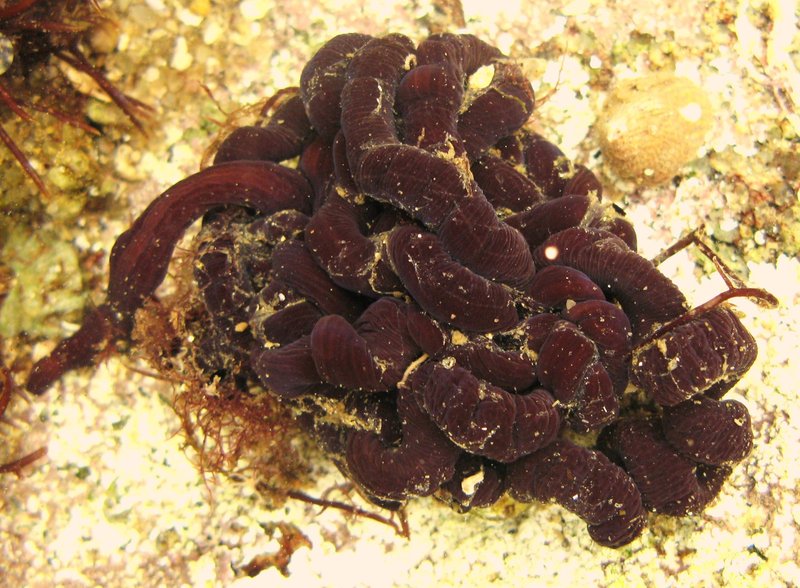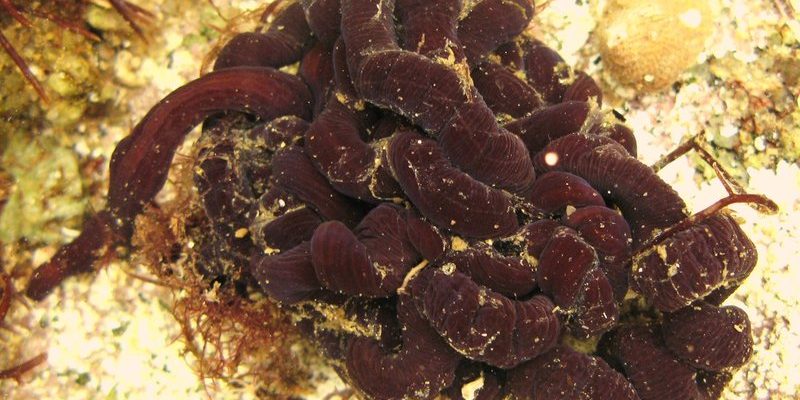
Bootlace worms, scientifically known as *Lineus longissimus*, are not just long in length but also rich in their ecological role. They thrive primarily in coastal habitats where they play a vital role in the marine ecosystem. Let’s unravel the mystery of where these remarkable worms are found and how their coastal homes shape their lives.
Understanding Bootlace Worms
Bootlace worms are a part of the nemertean family, which makes them relatives of flatworms. They get their name because of their long shapes and flexible bodies, almost like shoelaces flopping around. These worms can be found in a range of colors, including shades of brown and green, helping them blend into their surroundings.
You might be wondering what exactly makes them special. Aside from their length, which can reach up to 30 meters (that’s nearly the length of a blue whale!), they have the unique capability to regenerate. If they lose a part of their body, they can grow it back, a feature that makes them even more fascinating. This adaptability is crucial for survival in the often harsh coastal environments they inhabit.
The Coastal Habitat: Where Bootlace Worms Thrive
So, where do bootlace worms actually call home? They prefer the nutrient-rich mud and sand found in intertidal zones, estuaries, and shallow coastal waters. Imagine walking along a beach where the waves gently lap at the shore. If you dig a little into that wet, dark sand, you might just uncover a bootlace worm or two!
These coastal habitats provide the perfect mix of food and shelter. Bootlace worms are carnivores, feeding mainly on small crustaceans and other invertebrates that reside in the sediment. The interplay of sunlight, tide, and nutrient flow creates a buffet of options for them, making these environments essential for their growth and reproduction.
Physical Characteristics: Adaptations for Survival
Bootlace worms are equipped with some pretty amazing physical traits that help them thrive in their coastal homes. Their long, slender bodies are not only impressive but also functional. This shape allows them to burrow easily into the sand, which serves as both a hiding spot from predators and a place to hunt for smaller prey.
Their bodies are covered in a protective mucus layer, which aids in movement and prevents dehydration. Think of it as nature’s way of giving them a little coat, helping them glide through the mud with ease. Additionally, their ability to regenerate means that they can recover from injuries that might occur in their unpredictable habitat.
Global Distribution of Bootlace Worms
You’ll find bootlace worms primarily in the colder waters of the northern hemisphere. Coastal regions around the British Isles, Scandinavia, and parts of the North Atlantic are hotspots for these worms. If you’re wandering along the coastlines of these areas, you might be lucky enough to spot them.
Interestingly, they can also be found in more temperate waters, such as those off the coasts of Canada and the northeastern United States. They enjoy specific salinity levels in the water and often thrive in areas where fresh and saltwater mix, like estuaries. This adaptability allows them to occupy a variety of coastal habitats, making them quite resilient.
The Ecological Role of Bootlace Worms
Bootlace worms play an essential role in their ecosystems. As predators, they help to control populations of smaller marine animals like invertebrates and crustaceans. This keeps the balance in the food web, allowing for a diverse array of species to coexist.
Moreover, their burrowing activities aerate the sediment, which benefits other organisms living in the same habitats. By digging through the mud, bootlace worms create channels for water and nutrients to flow through, promoting a healthier environment for surrounding life. Honestly, these little guys are like nature’s little gardeners!
Threats to Bootlace Worm Habitats
Despite their fascinating adaptations, bootlace worms face several threats due to human activity. Coastal development, pollution, and climate change can dramatically alter their habitats. Increased sedimentation from construction and runoff can suffocate these worms and disrupt their food sources.
You might be wondering how climate change fits into the picture. Rising sea temperatures and ocean acidification can affect the delicate balance of coastal ecosystems. As temperatures rise, it may push bootlace worms to deeper waters, where conditions might not be as favorable for them.
Conservation Efforts for Coastal Ecosystems
Recognizing the importance of bootlace worms in maintaining healthy coastal ecosystems, conservation efforts are underway to protect these habitats. Organizations are working to monitor coastal health, implement sustainable fishing practices, and reduce pollution in vulnerable areas.
Additionally, raising awareness about the ecological significance of bootlace worms can help foster interest in marine conservation. When people understand that even the smallest creatures have a big impact on their environment, it encourages better stewardship of our coastlines.
In conclusion, bootlace worms may not be the most famous marine creatures, but they play a crucial role in coastal habitats. From their impressive lengths to their ecological contributions, they certainly deserve a spotlight. Next time you’re at the beach, take a moment to appreciate the hidden wonders beneath the surface—like bootlace worms—making our oceans vibrant and alive.

